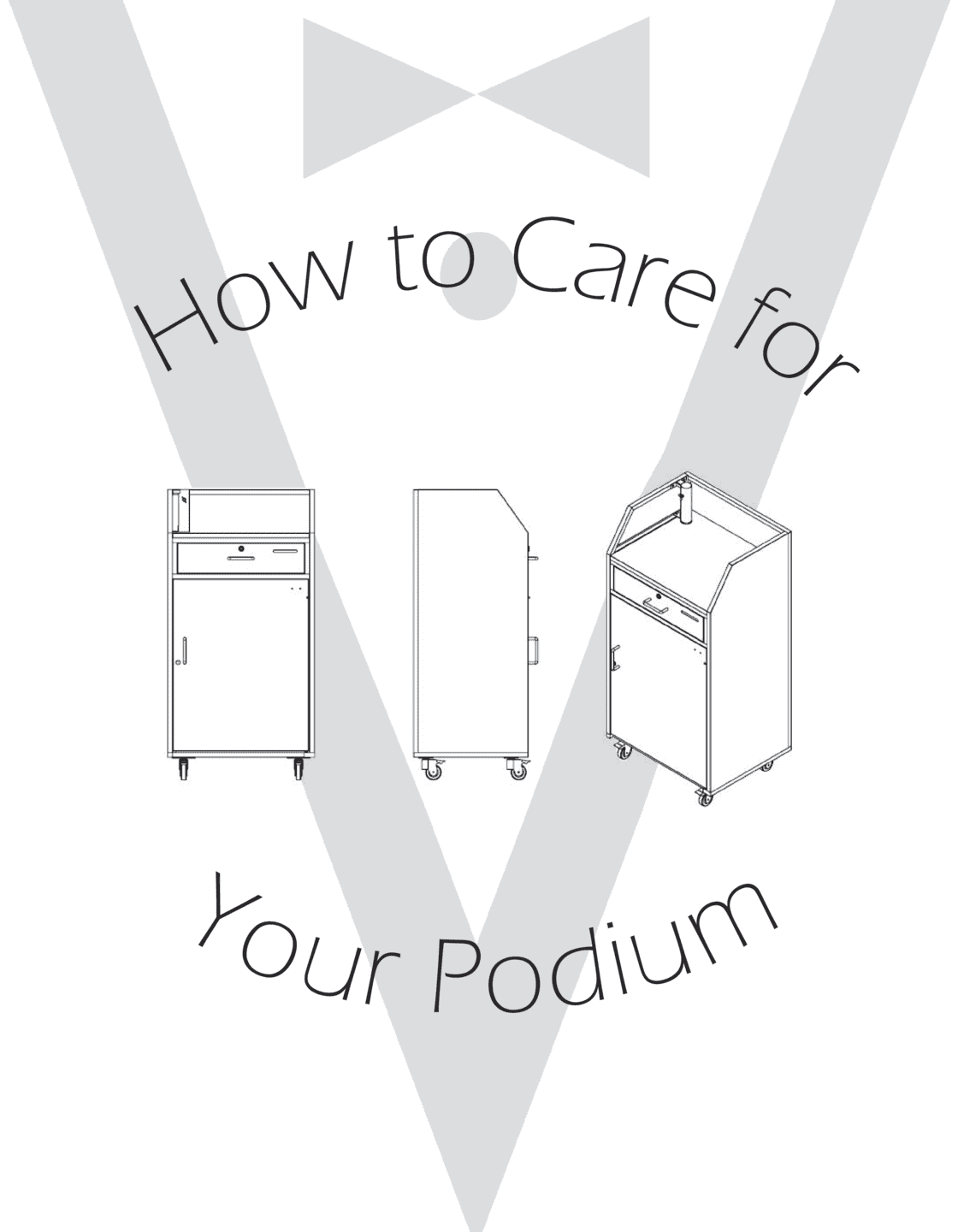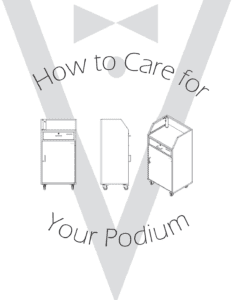

Proper maintenance will ensure you get the maximum life out of your valet podium. Here are a few tips on valet parking podium maintenance that will keep your podium operating like it did the day you bought it.
Surface
Wipe down the surface of your podium with soap and water and dry properly with a chamois. Once dry wipe  down once more with a dry microfiber towel.
down once more with a dry microfiber towel.
Handles
Tighten all handles monthly to ensure hardware does not become loose and fall off.
Casters
Don’t roll your podium while the casters are locked. If you are moving your podium across rough terrain make sure the casters do not get stuck in any large holes or gaps to prevent them from getting stuck and breaking off.
LED’s
Don’t charge the battery at the same time as running your LED’s. Do not allow the battery to get wet.
Rust
Rust is an important issue to address quickly. We recommend using Rust-Oleum and touch up paint as preventative maintenance.
Door
If you are having issues with the small spring latch that connects to your door feel free to call us for a replacement.
Drawer Tracks
We spray your drawer tracks with White Lightening Grease before we ship and recommend spraying yours every 2 months.
Internal Drawer Tracks
Internal drawer tracks need to be tightened an average of once a month depending on use to keep the screws from loosening and falling off.
Stainless Steel
Stainless steels need to be cleaned for aesthetic considerations and to preserve corrosion resistance. Stainless  steel is protected from corrosion by a thin layer of chromium oxide. Oxygen from the atmosphere combines with the chromium in the stainless steel to form this passive chromium oxide film that protects from further corrosion. Any contamination of the surface by dirt, or other material, hinders this passivation process and traps corrosive agents, reducing corrosion protection. Thus, some form of routine cleaning is necessary to preserve the appearance and integrity of the surface. Stainless steels are easily cleaned by many different methods. They actually thrive with frequent cleaning, and, unlike some other materials, it is impossible to “wear out” stainless steel by excessive cleaning.
steel is protected from corrosion by a thin layer of chromium oxide. Oxygen from the atmosphere combines with the chromium in the stainless steel to form this passive chromium oxide film that protects from further corrosion. Any contamination of the surface by dirt, or other material, hinders this passivation process and traps corrosive agents, reducing corrosion protection. Thus, some form of routine cleaning is necessary to preserve the appearance and integrity of the surface. Stainless steels are easily cleaned by many different methods. They actually thrive with frequent cleaning, and, unlike some other materials, it is impossible to “wear out” stainless steel by excessive cleaning.
1. Use the proper tools
- Non-abrasive tools, like soft cloths and plastic scouring pads
- Stainless steel pads (scrub in direction of polishing marks)
2. Clean with the polish lines or “grain”
- Scrub in a motion parallel to the lines when visible lines are present
- Use a microfiber cloth or plastic scouring pad when grain cannot be seen
3. Use alkaline, alkaline chlorinated or non-chloride containing cleaners
- Ask your supplier for an alternative if your present cleaner contains chlorides
- Avoid cleaners containing quaternary salts to avoid pitting and rusting
4. Treat your water
- Reduce deposits by softening hard water
- Install filters to remove distasteful and corrosive elements
5. Rinse, rinse, rinse
- Rinse and wipe equipment and supplies if chlorinated cleaners are used, dry immediately
- Wipe off standing water as soon as possible, especially when it contains cleaning agents
6. Never use hydrochloric acid (muriatic acid) on stainless steel
7. Regularly restore/passivate stainless steel

